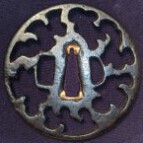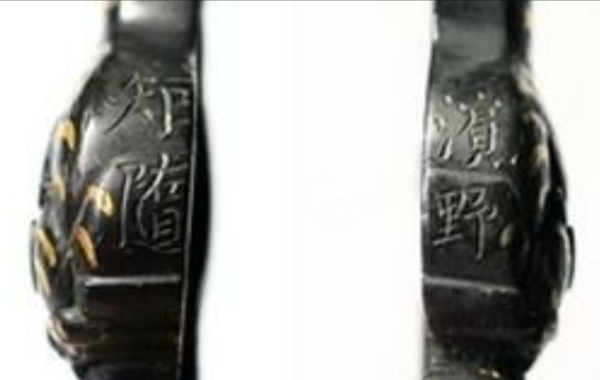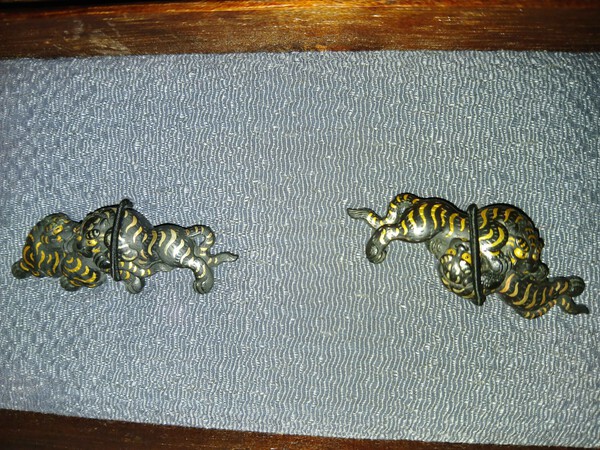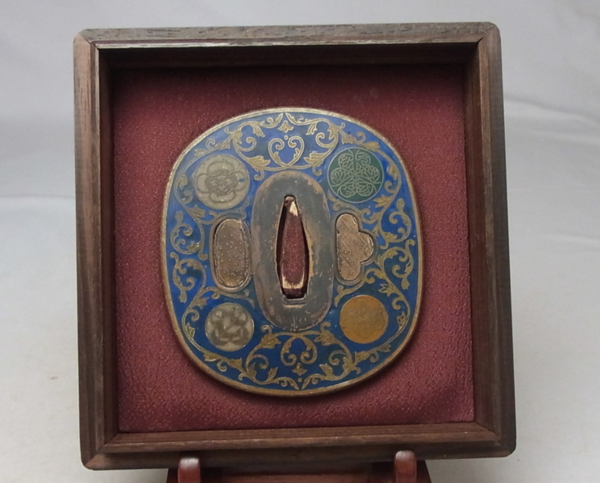-
Posts
548 -
Joined
-
Last visited
-
Days Won
5
Jake6500 last won the day on September 25
Jake6500 had the most liked content!
Profile Information
-
Gender
Male
-
Location:
Melbourne Australia
-
Interests
Collecting authentic Tsuba and Japanese history generally.
Profile Fields
-
Name
Jake
Recent Profile Visitors
3,091 profile views
Jake6500's Achievements
-
The very use of the term "ninja" amongst historians is highly contentious in and of itself. What even was a "ninja" and where did the concept come from? The weird mythologised blend of ikko-ikki peasant roots, espionage and what could bluntly be referred to as "magic" prompt many scholars of the period to avoid use of the term altogether. I cannot think of any equivalent class (real or mythologised) in Western culture... Maybe a DnD Paladin?
-
As a general rule in this hobby, when in doubt do nothing... Sorry I have nothing new to add to the discussion but Colin said all that needs to be said!
-
.thumb.png.4c5df79fec171b2dc4a23af38e280a4d.png)
Painted collection number comes in handy for provenance.
Jake6500 replied to Spartancrest's topic in Tosogu
That Shozui tsuba is spectacular and will no doubt sell for more than my kidneys Dale -
I think one of the big giveaways that this is gimei is in the fingers on the fuchi. Granted this is no doubt even smaller than the pictures make it look, fine details like fingers and hands are often a good way to tell the overall quality of works and the fingers here seem to lack the finesse of a master craftsman. Not sure I agree with Kirill either, overall I do not get the Hamano school vibe from these pieces. I can see where this idea has come from as both the Hamano and Mito schools were influenced by the earlier Nara and Goto schools making them stylistically similar. Both schools were known for using iroe takazogan like in these examples on a shibuichi, shakudo or in this case an iron base. One of the characteristic elements of Hamano work that you would often see in Hamano pieces and which you wouldn't generally see in Mito school work are expressive gold eyes. Mito work generally features thinner eyes more characteristic of the Nara school which I think this set (and the higher quality tsuba example) align with. You see these eyes in some late Hamano school pieces too so this is by no means conclusive one way or the other, but it does give some indication. Mito work is also known for its "soft" style whereas Hamano school work often includes more powerful, striking contrasts. The colour combinations featured in the kashira of this set give off more of a Mito vibe to me as the parasol (specifically the colour/metal choice) seems to soften the contrast of the mixed-metal design. On the flip side, the contrast between iron and gold on the robe of what I presume is a court minister(?) in the fuchi does resemble the type of takazogan contrast you would see in both Mito and Hamano school work, so it is hard to definitively rule one way or the other. Both schools also feature takanikubori prominently like that seen in this set.
-
As a regular resident of the Tosogu section I just purchased my first blade (about 2-3 hours ago at time of writing this post) and wanted to share with the forum! The blade is a hozon certified kinnoto (imperial royalist sword) from the Gassan school dated August 1863 by Unzenshi Sadahide. It is a very large katana with a 75cm blade and 27cm nakago. The blade has a lot of weight and thickness to it, I'd say about twice as heavy as an average katana. Aside from the size and heritage of the sword, I really like the lengthy kissaki as well. The blade should make for a fun koshirae project in the future! Let me know your thoughts, I am still a novice when it comes to blades! Here are a few photos:
-
I will be looking into getting a better camera soon, as well as some lighting... I just purchased my first blade today (literally about 2 hours ago) and will need the appropriate light to fully enjoy the fine details after all! Edit: Link to thread https://www.militaria.co.za/nmb/topic/54033-gassan-school-sadahide-kinnoto-first-blade/
-
Branching out from my usual lane in the Tosogu section... For Cody's knowledge, would it be fair to assume based on the mei that this is likely an example of a shinto sword (sword dating to the early/mid Edo period circa 1596-1780) or even more precisely if this is a Tadatsuna sword, that this blade would have been produced in the Osaka area? From what I read online there is another Tokubetsu Hozon certified blade out there with an identical inscription dated to the 7th year of Houei (1710). This would be the prolific (but talented) second generation Tadatsuna, not the first.
-
Interesting example Jack, It's always interesting to see how Japanese artisans - the majority of which would never have encountered a tiger before - present tigers in their work. The example you've linked attempts to portray tigers through a realist lens which makes it an interesting case study that deviates from some other Edo Period examples that adopt a more surrealist approach. Yurakusai Sekibun for example produced a large variety of tiger tosogu along the realist-surrealist spectrum, some of which appear more cartoonish and many of which have exaggerated rounded features.
-
Hey Tosogu fans, I'm doing my usual thing and creating this thread to share my latest acquisition with the forum. I recently picked up this pair of tiger menuki on Jauce signed Hamano Noriyuki! The menuki are uncertified however they seem to match the Hamano school stylistically. A fine detail that caught my attention and convinced me to bid for these was the different purities of gold used in the stripes of the tigers distinguishing them from each other. Here is an enlarged photo of the signature from the original auction listing, followed by a photo of my own taken from my phone camera. Apologies for the less than stellar quality!
-
I'll see if I can find an opportunity to do a scan rather than a photograph some time in the near future and will upload the result here for you! Thanks again for the great resource!
-
Hey Mauro, Thanks for compiling these. I recently purchased a tsuba that appears to also have a hakogaki by Kanzan. You may recall seeing my thread about it a couple months ago... Figure I would re-post it all here and you can assess whether it is a close enough match to add to your compilation! Translation: 鐔 - Tsuba 七宝紋所之図 – Shippo, mondokoro no zu (figure of family crests) 朧銀磨地 – Oborogin, migakiji 七宝紋散 – Shippo mon chirashi 金覆輪 珍品也 – Kin fukurin, rare item 無銘 平田彦四郎 – Mumei, Hirata Hikoshiro (attribution) 昭和壬子年秋吉日 – Showa Mizunoe-Ne year (1972), autumn, a lucky day 寒山誌 – Kanzan wrote.
-
I don't think it actually has anything to do with your kozuka Luca, but it sort of reminds me of the kusari and fundo on a kusarigama.
-
To me these look like tobacco pouch ornaments like Grey said. Both the size and round shape would suggest this is likely. They may have been repurposed as menuki at a later date. This would suggest to me that these might be Meiji Period works. They are quite well made and there are some fine details there. Condition could be better however... Some examples from the net: Many artisans who made tosogu also dabbled in other ornamental metalwork such as these.
-
Very interesting explanation and I can see what you are saying. It is quite a large seppa, very large, thick and gives off late Edo or Meiji era Kabuki vibes.
-
Dale is our resident Tosogu expert. We are all astonished at how he can pull up examples of tsuba from ancient tomes. One of the ways you can judge the age are by the shape of the hitsu-ana (hole on the side). Older tsuba tend to have different shaped hitsu, narrower or sometimes more triangular in shape if you're looking at a tsuba that is old enough (Muromachi). The other thing is that back in these earlier pre-Edo periods tsuba generally took a mokko-gata (flower) shape instead of the more circular shape we see in Edo Period pieces. Not all mokko-gata tsuba are necessarily that old (there are many examples of Edo period ones that emulate the old style) but it is still a useful indication.











